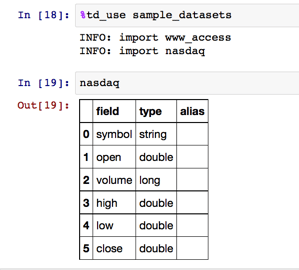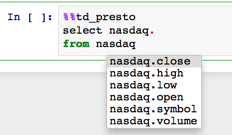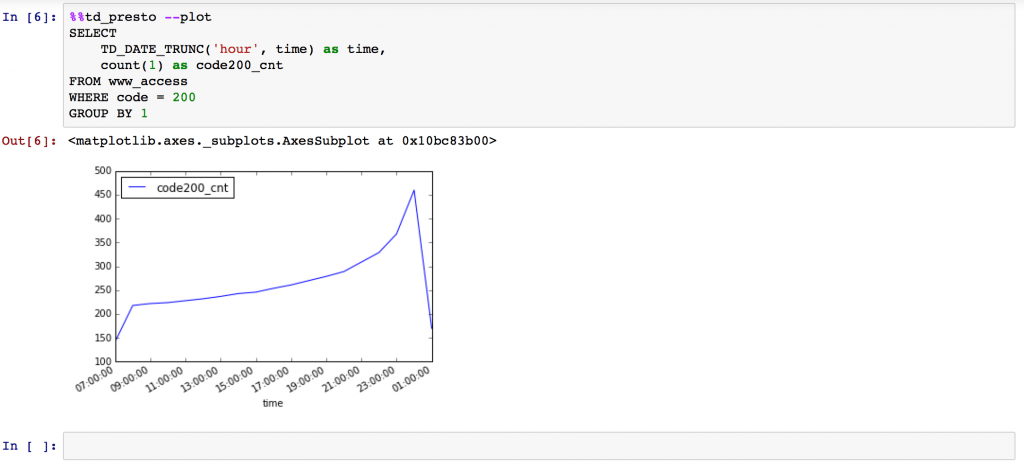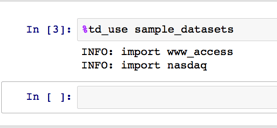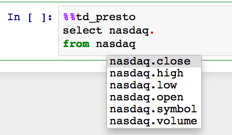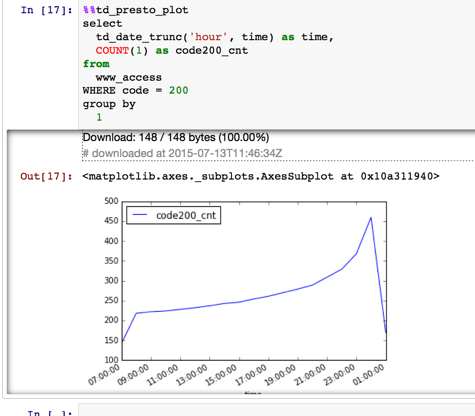Making Magic with pandas-td
Last updated August 11, 2015Magic functions enable common tasks by saving you typing. (NOTE: Pandas itself doesn’t have magic functions; the IPython kernel does.) Magic functions are functions preceeded by a % symbol. Magic functions have been introduced into pandas-td version 0.8.0! Toru Takahashi from Treasure Data walks us through.
Treasure Data’s magic functions work by wrapping a separate % around the original function, making the functions callable by %%. Let’s explore further to see how this works.
Until now
We start by creating a connection, importing our relevant libraries, and issuing a basic query, all from python (in Jupyter). Using the sample data, it would look like this:
import os import pandas_td as td #Initialize connection con = td.connect(apikey=os.environ[‘TD_API_KEY’], endpoint = ‘https://api.treasuredata.com’) engine = con.query_engine(database=’sample_datasets’, type=’presto’) #Read Treasure Data query into a DataFrame df = td.read_td(‘select * from www_access, engine’)
With the magic function
We can now do merely this:
%%td_use_sample_datasets %%td_presto select count(1) as cnt from nasdaq
If you add the table name nasdaq after %% td_use, you can also see the schema:
Even better, you can tab edit the stored column names:
As long as %matplotlib inline is enabled; then you can throw a query into magic’s %%td_presto – -plot and immediately visualize it!
Very convenient!
How to enable it
Set the API_KEY environment variable:
export TD_API_KEY=1234/abcd…
You can then load the magic comment automatically! You’ll want to save the following to ~/.ipython/profile_default/ipython_config.py
c = get_config() c.InteractiveShellApp.extensions=[ ‘pandas_td.ipython’, ]
Let’s review
Querying your data with presto:
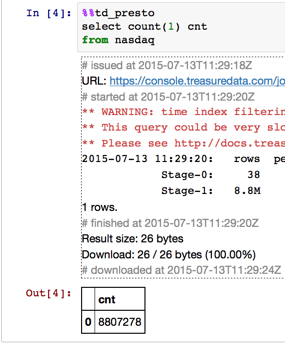
Stay tuned for many more useful functions from pandas-td! These tools, including Pandas itself, as well as Python and Jupyter are always changing, so please let us know if anything is working differently than what’s shown here.
